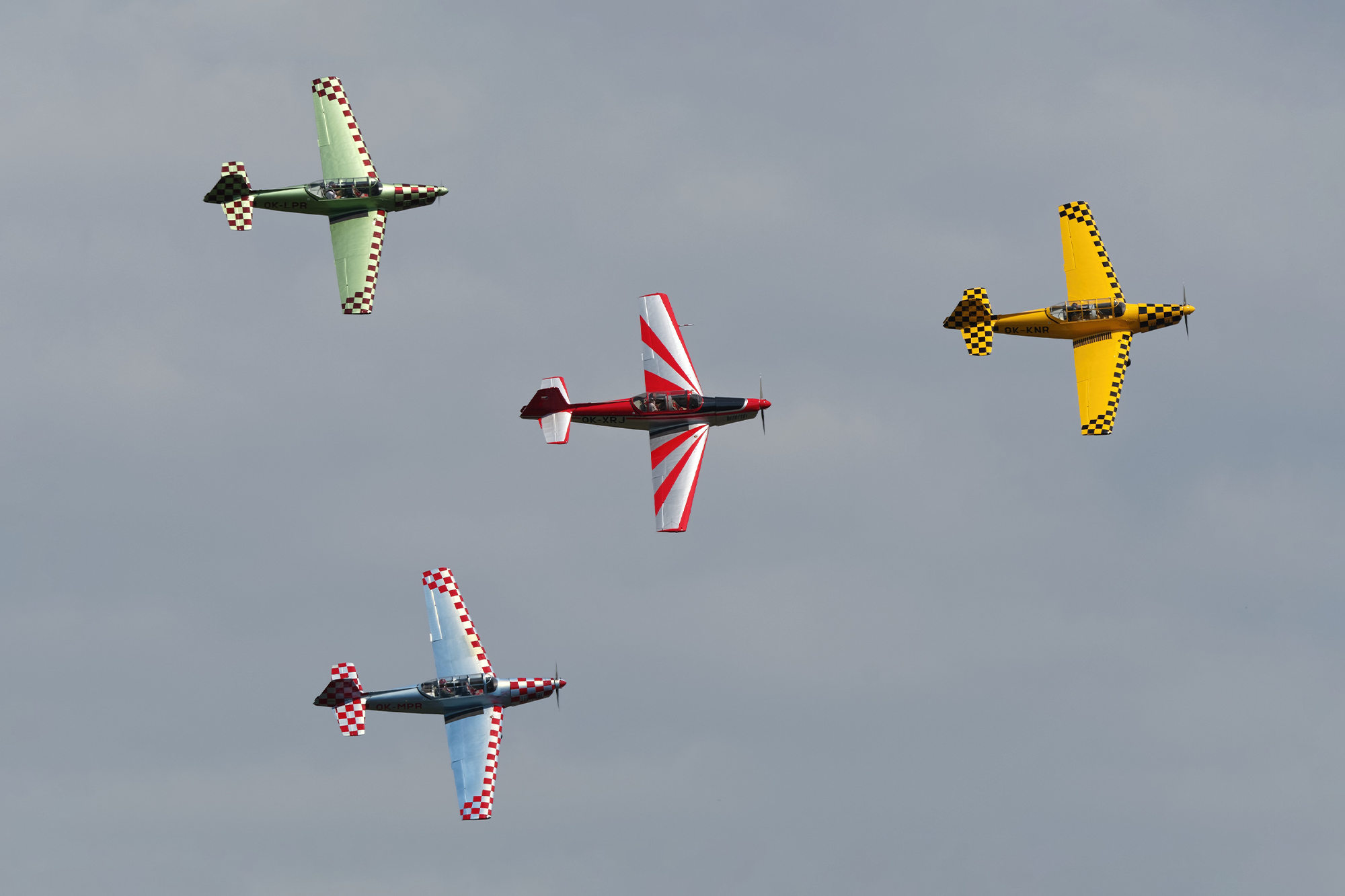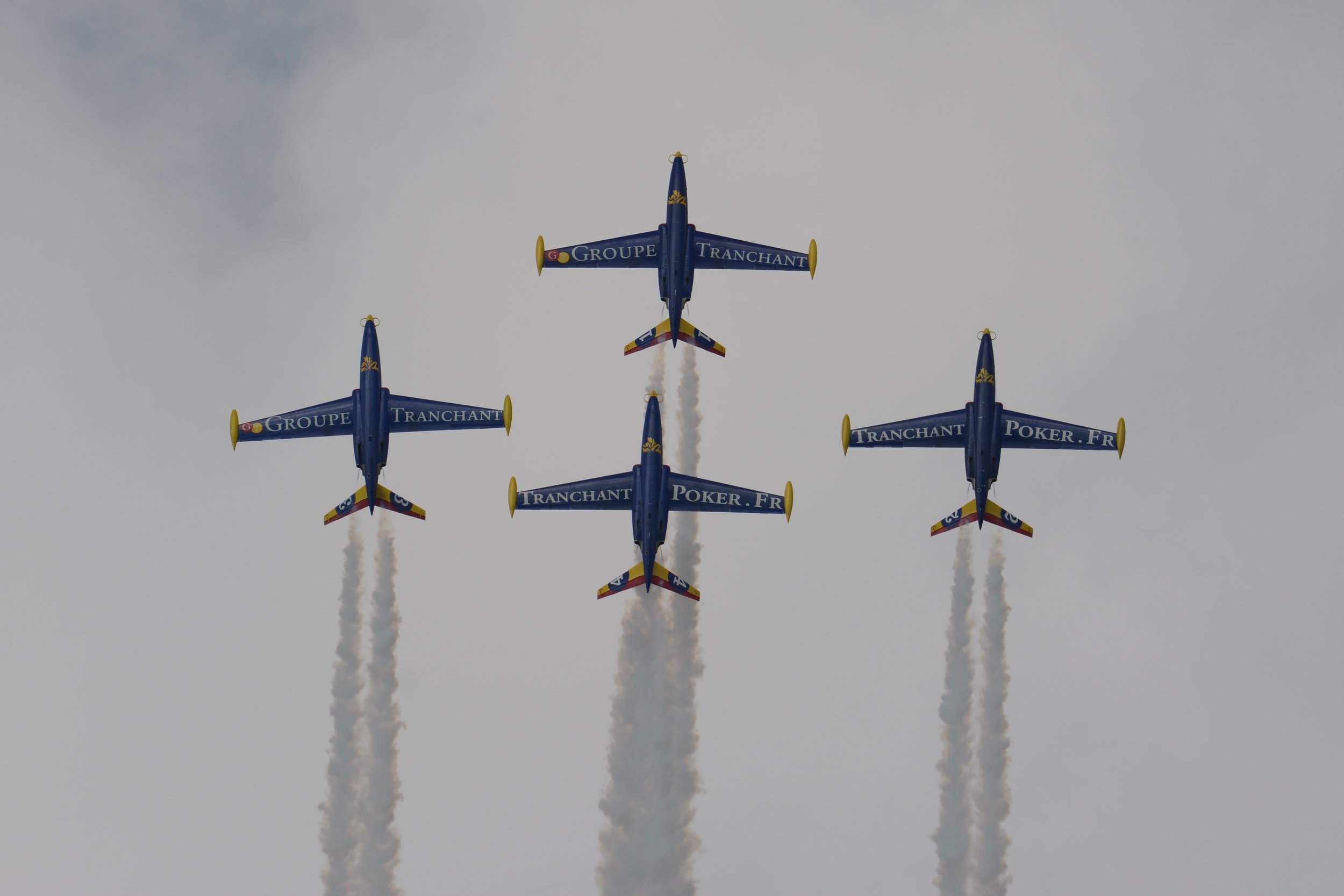SUBITO Team
Country
Switzerland
Size
3 Aircraft
Base
St. Gallen–Altenrhein Airport
The SUBITO Team is a civilian formation aerobatic team based at the Aviation Museum in Altenrhein in the Canton of St. Gallen, Switzerland, located near Lake Constance. Comprising three former Swiss Air Force Pilatus PC-7 Turbo Trainers, each aircraft is fitted with a white smoke generator. Their captivating display, which spans around 10 minutes, showcases precise formation flypasts, loops, breaks, and thrilling opposition passes. While the SUBITO team is a familiar sight at various events throughout Switzerland, witnessing their performance at international airshows beyond Swiss boundaries is a rare treat.
| Back to Top |
Pilatus PC-7 Turbo Trainer
The Pilatus PC-7 Turbo Trainer is a low-wing tandem-seat training aircraft designed and manufactured by Pilatus Aircraft of Switzerland. The aircraft is capable of all basic training functions including aerobatics, instrument, tactical and night flying.
The PC-7 was developed from the preceding Pilatus P-3, largely differing by the adoption of a turboprop engine, a bubble canopy, and a new one-piece wing. Introduced during the 1970s, it has since developed a sizable presence in the global trainer market. The type has been adopted by in excess of 20 air forces as their ab initio trainer, as well as multiple civilian operators. Over one million hours have reportedly been flown by PC-7s worldwide. In addition to training operations, some aircraft are armed and have been used for combat missions by several customers, including Chad, Iran, and Mexico, often in violation of the relevant export agreement between the customer and the Swiss government.
An improved model of the aircraft, the PC-7 Mk II, was developed during the 1990s by combining the newer PC-9's airframe and avionics with the PC-7's smaller turbine engine. Reportedly, in excess of 500 PC-7s have been sold to various operators, the majority of which still being in service. In Pilatus' line-up, the PC-7 has been succeeded by the newer PC-9 and PC-21 trainers.
Work on what would become the PC-7 commenced during the 1960s. It was based on the earlier piston-powered Pilatus P-3, the initial prototype being produced from the existing prototype P-3, principally differing by the substitution of its Lycoming O-435 engine with a Pratt & Whitney PT6A-20 turboprop powerplant. On the 12th of April 1966, the modified prototype performed its maiden flight. However, the PC-7 programme was abruptly shelved following an accident involving the aircraft. The termination of work was reportedly driven by a lack of market interest.
In 1973, it was decided to restart work on the programme; factors for its revival had included the 1973 oil crisis, the launch of the rival Beechcraft T-34C Turbo-Mentor, and the increasing age of the existing trainer aircraft. To support the relaunch, another P-3 was obtained from the Swiss Air Force. After modifications, this aircraft first flew on the 12th of May 1975. Further extensive modifications followed later in the programme, including the adoption of a new one-piece wing complete with integral fuel tanks, along with an altered tailfin and a bubble canopy. The flight test programme came to a close during Autumn 1977.
On August 12th 1978, the first production aircraft made its first flight. On the 5th of December of that year, Switzerland's Federal Office of Civil Aviation (FOCA) issued civil certification for the PC-7; immediately thereafter, initial deliveries of production aircraft commenced to customers in Burma and Bolivia. Over time, sales of the PC-7 generated considerable profits, allowing the company to finance the development of further types of aircraft.
The PC-7 Mk II is a development of the PC-9's airframe and avionics, which was powered by the PC-7's smaller turbine engine, which reportedly achieved lower operating and maintenance costs. This variant was developed at the behest of the South African Air Force (SAAF), who later adopted the type. A batch of 60 PC-7 MK IIs was locally assembled in South Africa using kits supplied by Pilatus for the SAAF; due to political considerations, these aircraft were not fitted with the armament hardpoints. Deliveries to the SAAF took place between late 1994 and 1996.
In addition to Pilatus' own improvement programmes, several third-party companies have independently developed their own upgrades for customer's PC-7. During the late 1990s, Israeli engineering firm Radom began offering a kit of new avionics for the type, which included a new mission computer, a wide-angle head-up display, along with various replacement communications and weapons-delivery systems.
In July 1998, Pilatus announced that it has come to an agreement with American company Western Aircraft for the latter to act as a distributor for the PC-7 across the North American civil aviation market. At this time, there were already five civil-registered PC-7s in operation in North America; Pilatus believed that the region could be a viable market for both remanufactured and newly built examples of the type, which would be priced between $1 million and $2 million respectively. It was recognised that this market was limited, Western Aircraft expected to sell only a few aircraft per year.
| Back to Top |




| Back to Top |

































